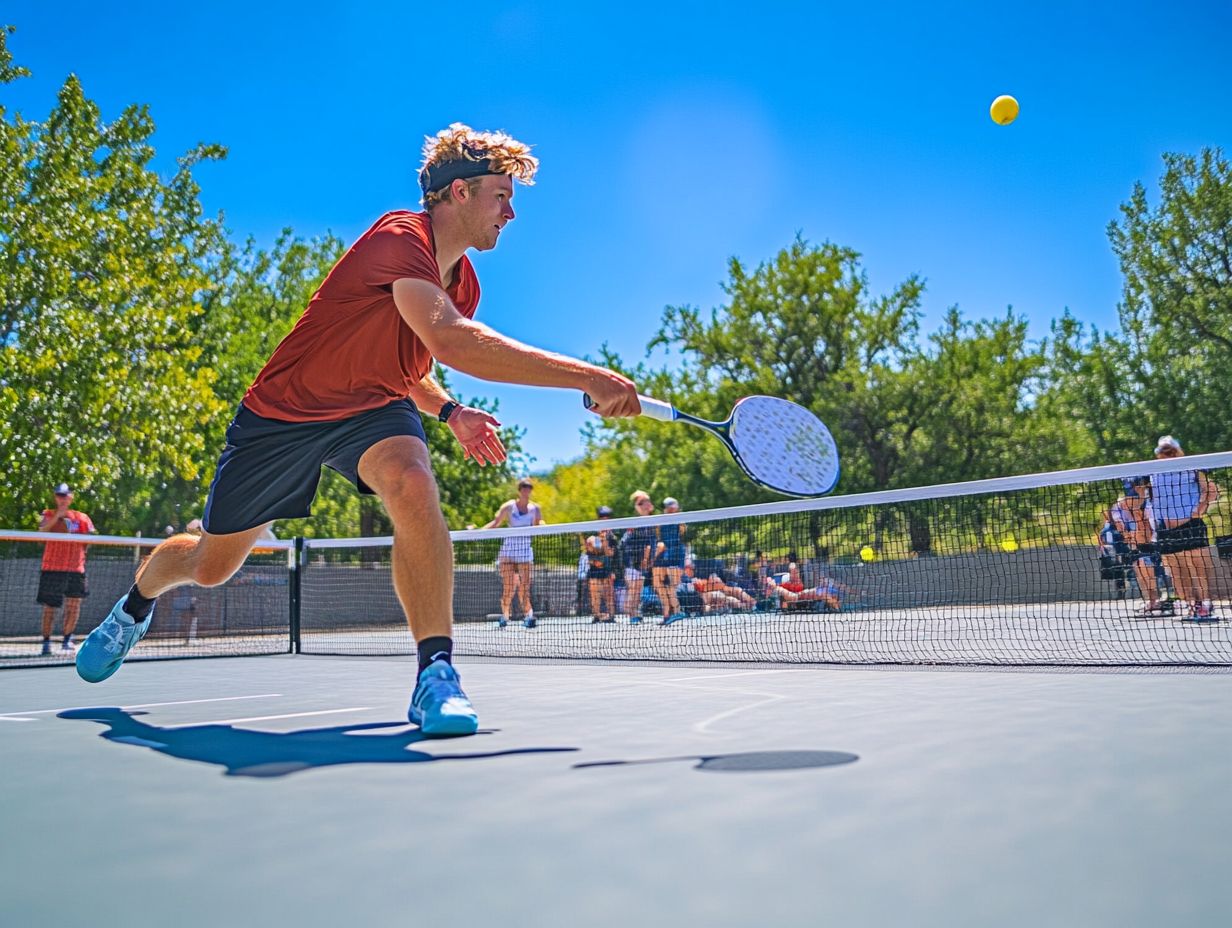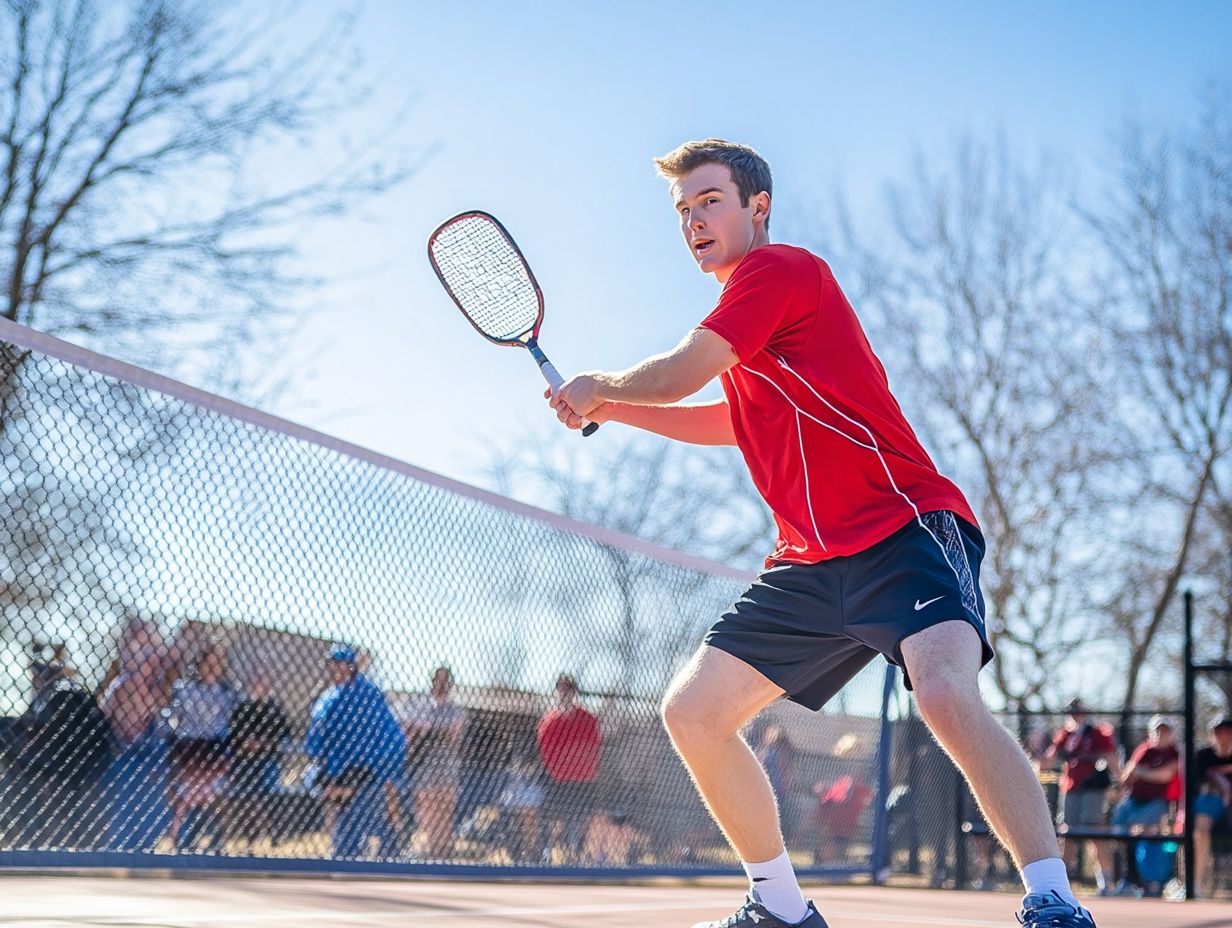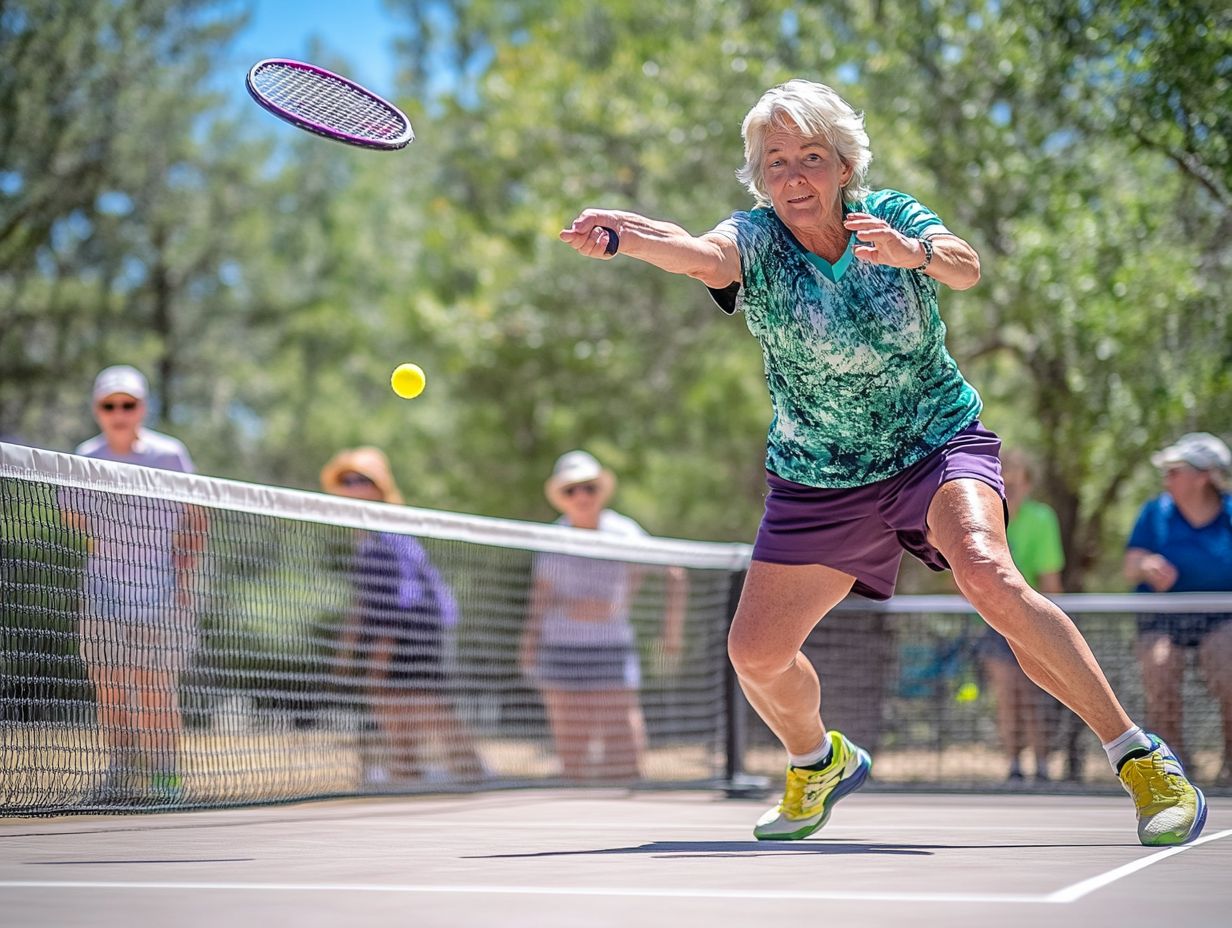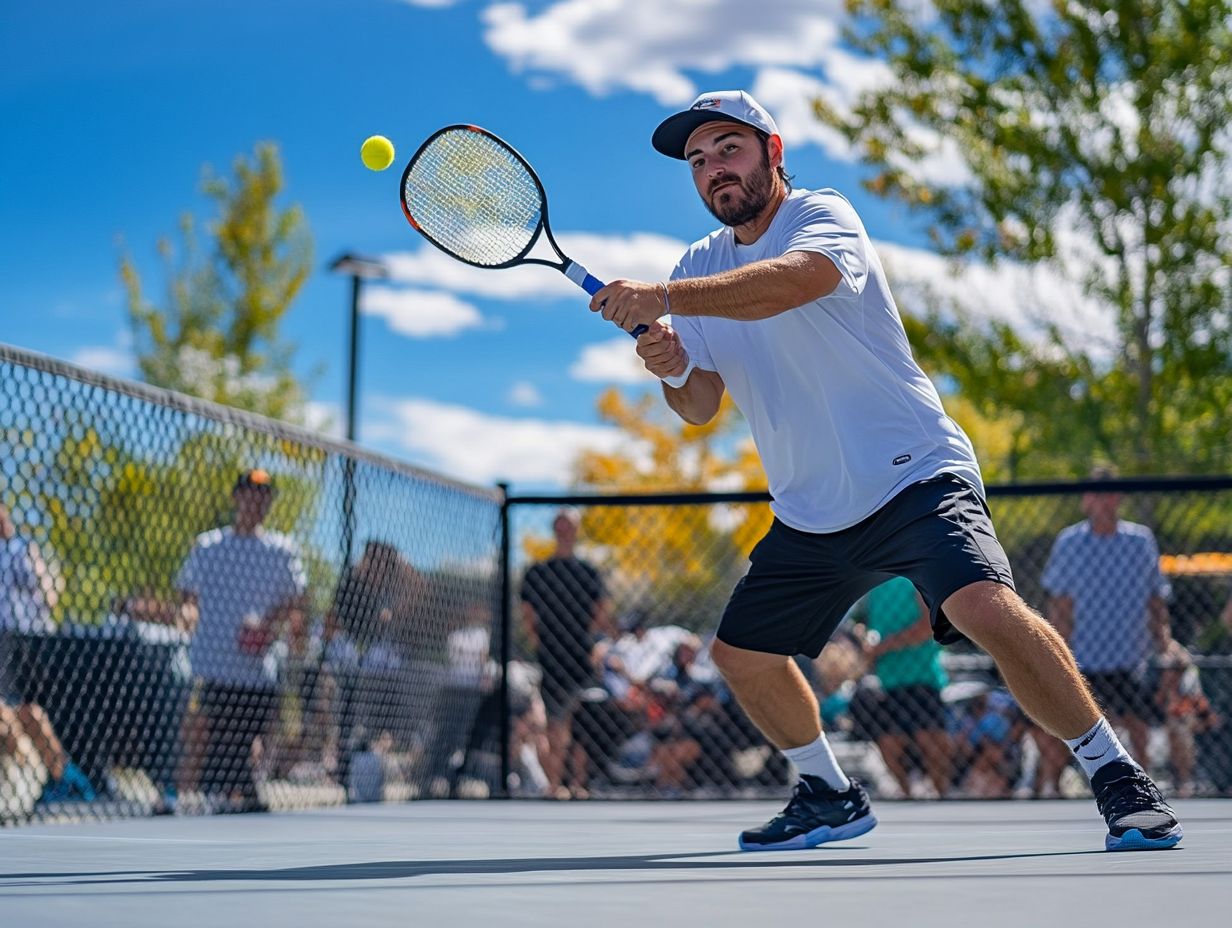Pickleball is not only a fun and engaging sport but also a game that requires strategy, skill, and teamwork. This article explores the essentials of pickleball, covering everything from understanding the rules to mastering various serving techniques.
You will learn how to optimize both offensive and defensive strategies, improve communication with your partner, and develop the ability to read your opponents effectively.
With the inclusion of practical drills, you will be well-equipped to enhance your game and outsmart the competition on the court.
The Basics of Pickleball

Pickleball is a rapidly growing sport that combines elements of tennis, table tennis, and badminton, making it accessible to players of all ages and skill levels.
The game is played on a rectangular court with a net in the center, and the rules emphasize fun and strategic gameplay. Players use paddles to hit a lightweight plastic ball over the net, and understanding the basic rules—including serve techniques, court positioning, and scoring strategies—is essential for fully enjoying this engaging sport.
As players develop their skills, they can begin to incorporate advanced tactics and strategies to outsmart their opponents, thereby enhancing their overall gameplay experience.
Understanding the Game and Its Rules
Understanding the fundamental rules of pickleball is essential for any player who aims to enhance their skills and enjoy the game more fully. By familiarizing themselves with the official scoring systems, court dimensions, and intricacies of play, beginners can develop strategies that will improve their performance.
The rectangular court measures 20 feet wide and 44 feet long for doubles play and features non-volley zones on either side of the net, necessitating a solid understanding of proper serving techniques. Knowing how to serve the ball and recognizing what constitutes a fault are critical for achieving success in the game.
Scoring is another area where a comprehensive understanding of the rules is vital. Players can only earn points while serving, which means that effective play strategies can only be implemented if the scoring rules are well understood.
With a solid grasp of the basic rules of pickleball, new players can approach the game with confidence.
Strategies for Serving
Mastering effective serving techniques in pickleball is crucial for gaining an advantage over your opponent right from the start of each point. A strong serve can place your opponent in a defensive position for the duration of the rally.
In pickleball, players can employ various serving techniques, including underhand, overhand, and spin serves, to keep their opponents off balance and create opportunities for easy points.
Furthermore, strategic serve placement and an understanding of your opponent’s weaknesses are essential components of a successful serving strategy, making these techniques important for both singles and doubles play.
Mastering Different Types of Serves

In pickleball, there are various types of serves, each offering unique strategic benefits that can help you gain an advantage over your opponents.
Flat serves are the fastest and most direct, making them challenging to return. Topspin serves generate high bounces that can push players out of position, while slice serves cut through the air, creating unpredictable angles that complicate returns. Each of these spin techniques influences the speed of an opponent’s reaction time.
All serves can disrupt an opponent’s timing and create opportunities for an offensive rally; therefore, it is essential for players to master a variety of serving styles to remain competitive in matches.
Offensive Strategies
Effective offensive strategies in pickleball rely on smart shot selection and placement, enabling players to consistently outthink and outplay their opponents.
Players need to understand when and how to utilize drives, dinks, and angle shots to exploit their opponent’s weaknesses. By combining a strong offensive approach with proper execution and an understanding of how opponents are likely to react, players can enhance their scoring opportunities and control the pace of the game.
Maximizing Your Shots and Placement
Maximizing shot placement in pickleball is crucial, as it can control the pace of the game and enhance the effectiveness of offensive strategies. Thoughtful shot placement can create difficulties for opponents, forcing them into undesirable defensive positions.
By utilizing various types of shots, such as drop shots, lobs, and hard drives, players can exploit their opponents’ poor positioning. A well-placed shot can generate scoring opportunities by throwing opponents off-balance and opening up the court for strategic plays.
While maximizing shot placement is vital for a player’s offensive capabilities, it also helps keep opponents unsettled. This makes it an essential aspect of the game for players looking to elevate their skills and implement winning strategies.
Defensive Strategies

Defensive strategies in pickleball are crucial because they enable players to anticipate and respond to their opponents’ shots while maintaining control of the game. Effective defensive play relies heavily on anticipation skills and good footwork, as these abilities allow players to position themselves optimally and recover quickly after the ball has been struck.
Understanding the common offensive strategies employed by opponents can help players develop their own defensive tactics to counteract and mitigate threats, ultimately enhancing their overall gameplay.
Anticipating Your Opponent’s Shots
Understanding your opponent’s shots in pickleball is a crucial skill that can significantly impact the outcome of games by enabling players to prepare and respond effectively.
By developing a keen awareness of your opponent’s habits, you can gain insight into their shot patterns and areas of vulnerability. Observing their body language and preferred shots can provide you with a better idea of where their next shot is likely to go. This foresight allows players to position themselves correctly, making it easier to receive the ball.
Knowing that an opponent has a powerful forehand or tends to play soft drop shots helps players react more quickly. Overall, these observation techniques contribute to improved gameplay and increased confidence in high-pressure situations.
Partner Communication and Coordination
Effective communication and coordination between partners are crucial for success in pickleball, particularly during doubles play, where teamwork can significantly enhance overall gameplay and performance.
Effective Teamwork on the Court

Player collaboration in pickleball refers to the ability of teammates to work together on the court to develop effective strategies and execute plays that capitalize on each player’s strengths. Smooth communication enhances player movement by ensuring that partners are constantly aware of each other’s positions and intentions.
This awareness allows for better shot selection, as players can anticipate their partners’ actions and respond with precision, whether moving to the net or defending against an opponent’s attack. Collaborative decision-making fosters a cohesive overall strategy that integrates both offensive and defensive elements, leading to improved performance in doubles games.
By mastering the intricacies of player collaboration, teams can create plays that consistently outperform their opponents.
Outsmarting Your Opponent
Successfully outsmarting your opponent in pickleball requires a blend of strategic thinking from a psychological perspective and the ability to execute those strategies with skill, ultimately leading to a decisive advantage in matches.
Players can enhance their gameplay by mastering deception techniques that keep opponents off balance and by employing effective shot placement strategies that exploit their weaknesses.
Moreover, evaluating your opponent’s playing style and habits can provide critical insights that help refine your game plan and improve your reaction time during rallies.
Reading and Reacting to Your Opponent’s Moves
Reading and reacting to your opponent’s moves in pickleball is a dynamic process that can greatly enhance your ability to respond quickly and effectively during competitive play. This process relies on developing strong observation skills and a solid understanding of the mechanics of the game.
Players should focus on observing their opponents’ movement patterns to predict plays even before they occur. The faster players can react, the more quickly they can adjust their shots and position themselves on the court.
Practicing drills that simulate game situations can improve reaction time and decision-making, enabling players to be agile and adaptable during matches. Mastering these skills can provide a significant advantage, leading to more strategic and successful games.
Practice Drills for Improving Strategy
Structured and organized practice drills are essential for helping players enhance their strategy, develop skills, and refine techniques in pickleball. Engaging in regular practice fosters muscle memory and instills confidence in players, allowing them to effectively utilize their abilities during gameplay.
From serving techniques to shot execution and coordination, purposeful practice builds the endurance and mental resilience required for competitive play. By incorporating a variety of practice drills into their training regimen, players can improve their overall gameplay and increase their readiness for matches.
Exercises to Enhance Your Pickleball Skills
Practicing targeted exercises and drills is essential for enhancing your pickleball skills, as they enable you to develop precise movements, improve speed, and coordinate your actions on the court.
By focusing on specific aspects such as shot selection, footwork, and serving techniques, players can significantly enhance their performance. Maintaining a structured training schedule that includes a variety of skill-building exercises not only improves performance but also boosts overall conditioning.
For instance, incorporating quick lateral movements during warm-ups can enhance footwork, while repetitive serving practice can increase the accuracy and power of serves. These targeted training sessions ensure that athletes grasp the mechanics behind each skill and cultivate the physical attributes necessary to execute them effectively against opponents.

Pickleball’s more than a game to me—it’s a passion. I write, sharing its highs and lows, the thrills and the lessons. Some tales might draw you to the court, while others give a hint of the game’s magic. So, curious about my journey? Ready to dive deep into the world of pickleball with me? Let’s go.
